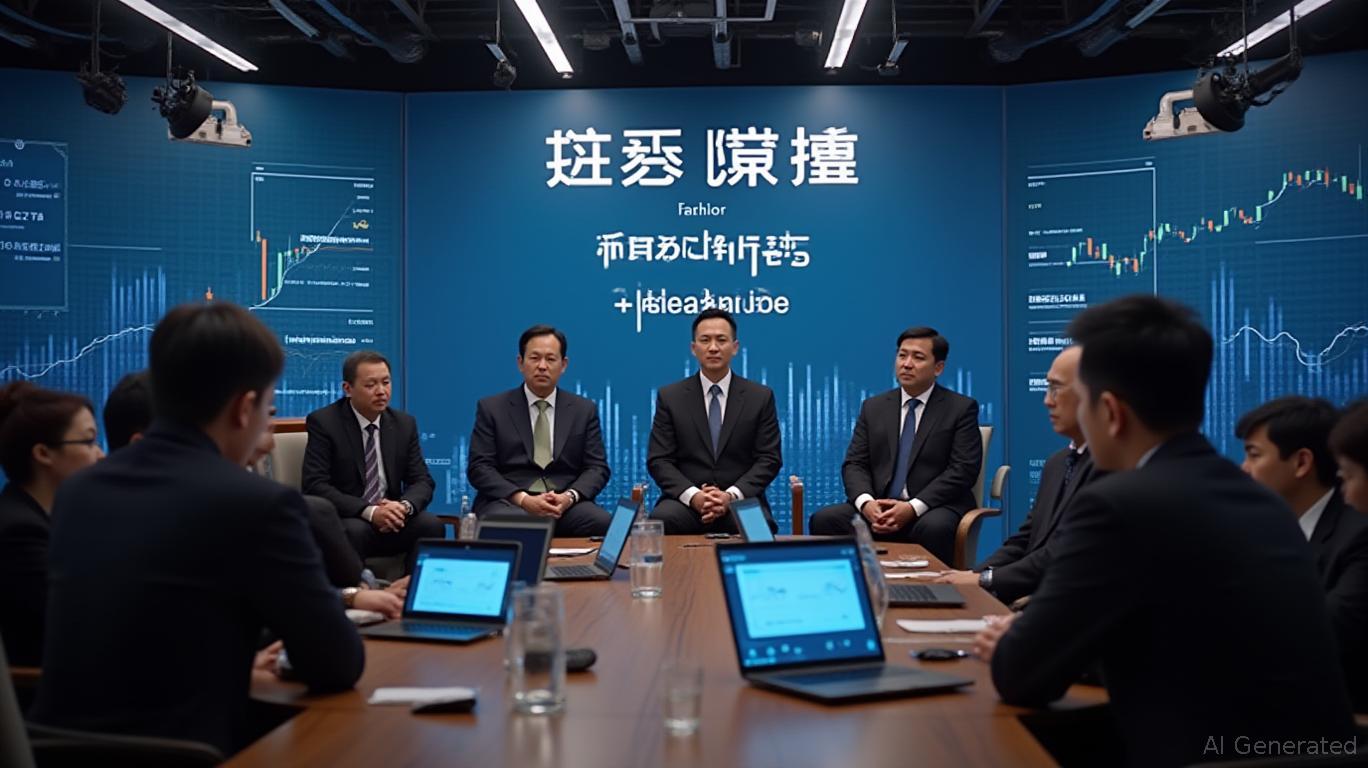SUSHI Drops 23.17% Over a Month Due to Reduced Margins and Production Issues
- SUSHI fell 5.44% in 24 hours to $0.5154, with a 23.17% monthly and 62.16% annual decline. - SUSS cut 2025 margin targets to 35-37% gross and 11-13% EBIT due to weak Q3 results and cost pressures. - Despite maintaining €470-510M sales guidance, Q3 gross margin dropped to 33.1% and EBIT to 10.5%. - Order intake fell 17% YoY to €70M, with analysts citing mix challenges and dual-site production costs. - Technical indicators confirm sustained bearish momentum, signaling persistent operational and financial he
On October 28, 2025, SUSHI experienced a 5.44% decline over a 24-hour period, falling to $0.5154. This represents a 3.83% decrease over the last week, a 23.17% loss in the past month, and a 62.16% drop over the previous year. These price movements highlight a difficult stretch for investors, largely due to a mix of operational and financial challenges facing SUSS, the company behind SUSHI.
SUSS has adjusted its margin outlook for 2025 for the second time this year, following weaker-than-anticipated third-quarter performance. The company now projects a gross margin between 35% and 37% and an EBIT margin of 11% to 13%, both lower than the earlier forecasts of 37% to 39% and 13% to 15%. These revisions point to ongoing difficulties with rising costs and an unfavorable product lineup.
Even with the reduced margin forecasts, SUSS has kept its full-year 2025 sales projection at €470–510 million, showing continued faith in its revenue prospects. However, this confidence is dampened by a disappointing third-quarter gross margin of 33.1% and an EBIT margin of 10.5%, both falling short of expectations. These figures were impacted by a less favorable product mix, increased production expenses for projection scanners, and weaker sales of bonders, which have historically delivered higher margins.
Operating costs climbed to €26.5 million in the third quarter, up from €22.7 million a year earlier, further straining finances. New orders dropped to €70 million, marking a 17% decline compared to the previous year, and the book-to-bill ratio slipped to 0.6x. Analysts attribute these setbacks to a combination of product mix and cost issues, as well as the added expenses of running two manufacturing sites in Zhubei.
Technically, SUSHI has remained in a prolonged downtrend, with no immediate signs of recovery. The 23.17% monthly decline has pushed the stock further into bearish territory, while the 62.16% annual drop points to deeper, long-term structural problems rather than just short-term market swings.
The recent price movement has breached key support levels, and both RSI and MACD indicators point to a continuation of the current downward trend. These technical signals indicate that the market views the margin reductions and operational difficulties as ongoing issues, not isolated incidents.
In light of these factors, one could design a backtesting strategy to assess how trades perform when triggered by a 10% single-day drop in the stock price—a method often used to spot major negative events in the stock market.
Disclaimer: The content of this article solely reflects the author's opinion and does not represent the platform in any capacity. This article is not intended to serve as a reference for making investment decisions.
You may also like
REI’s AI-Gasless Strategy Addresses Expensive and Inefficient Blockchain Issues
- REI Network integrates Spheron and XDGAI, shutting down GXChain on Nov 10, 2025, to focus on AI-native, gasless blockchain infrastructure. - Spheron provides decentralized GPU resources via REI's zero-fee EVM, while XDGAI enables on-chain AI training and multimodal learning through the network. - Strategic shift addresses blockchain's high-cost challenges, with initiatives like GasZero Program and AI Agent Activation Campaign to reduce transaction costs. - Product milestones include gas strategy simulato

Bitcoin Updates: Bitget Introduces Zero-Interest Liquidity, Tackling Altcoin Fluctuations as Whales Influence Market Dynamics
- Bitget launched a zero-interest institutional financing program (Nov 2025–Jan 2026) to boost altcoin liquidity by lowering capital barriers for market makers. - A "Mega Whale" accumulating 1,164 BTC in six hours signals renewed institutional interest in Bitcoin amid altcoin market volatility and fragmented trading depth. - The initiative targets under-served liquidity providers, aligning with industry trends of tailored financing structures to stabilize smaller-cap token markets. - Competitors like OKX a

Bitget Addresses Altcoin Liquidity Shortage by Offering Interest-Free Loans
- Bitget launches zero-interest loans for altcoin market makers to boost liquidity in smaller digital assets, effective November 2025–January 2026. - Qualified institutions can borrow up to 2M USDT with 50% reduced trading-volume requirements, targeting professional firms and new clients. - The program addresses fragmented altcoin markets by lowering entry barriers, enabling efficient capital deployment for stable, accessible trading conditions. - Aligning with performance-linked financing trends, Bitget e

HashKey’s Web3 Push Boosts Hong Kong’s Status as a Regulated Digital Finance Center
- HashKey Group dominated Hong Kong FinTech Week 2025, showcasing Web3 expansion and reinforcing Hong Kong's role as a regulated digital finance hub. - The firm highlighted its Dubai-based MENA exchange, user-friendly HashPass Wallet, and plans for a 2025 Hong Kong Web3 Festival targeting 10,000 attendees. - Aligning with Hong Kong's regulatory strategy, HashKey emphasizes compliance, institutional partnerships, and blockchain education to drive adoption. - Despite short-term crypto market volatility, Hash
